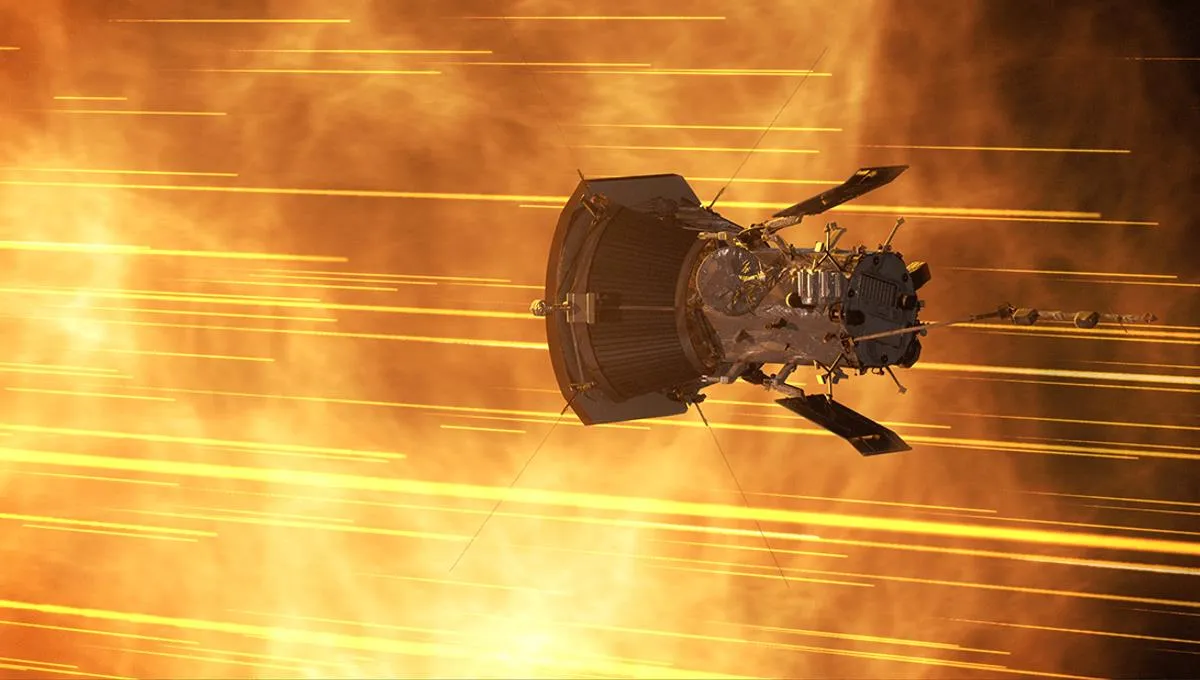
In 2018, NASA launched the groundbreaking Parker Solar Probe, embarking on an ambitious mission to explore the Sun's atmosphere, known as the corona. This remarkable spacecraft is designed to venture closer to our host star than any previous spacecraft, achieving a trajectory that brings it an astonishing seven times nearer to the Sun than its predecessors. By June 2025, the probe had completed its 24th close approach, setting a record for the fastest speed attained by a human-made object—an incredible 692,000 kilometers per hour (or 430,000 miles per hour).
The primary objective of the Parker Solar Probe is to study the Sun's atmosphere and provide insights into long-standing mysteries, particularly the acceleration of solar wind. One of the most perplexing puzzles, first identified in 1939, is the coronal heating problem. This dilemma arises from the observation that the Sun's corona is significantly hotter than its surface, with temperatures reaching up to 3.5 million °F (or 2 million °C). In contrast, the Sun's surface, known as the photosphere, has a relatively cool temperature of around 10,000 °F (or 5,500 °C).
The fundamental question remains: why is the Sun's atmosphere so much hotter than its surface when the surface is closer to the core, where energy is generated through the fusion of hydrogen into helium? Various theories have been proposed, including the idea that turbulence or a type of magnetic wave, known as ion cyclotron waves, may contribute to this heating. However, both theories face challenges; turbulence fails to adequately explain the extreme temperatures of the gases, while the magnetic wave theory lacks sufficient energy output to account for the observed heating, as explained by Dr. Romain Meyrand, a contributor to the recent research.
While both theories have their drawbacks, they, along with the concept of a helicity barrier, offer a promising framework for understanding the coronal heating problem. Dr. Meyrand describes this process as akin to water flowing down a hill, where the helicity barrier acts as a dam, redirecting energy into ion cyclotron waves. This connection enhances our understanding of how turbulent dissipation occurs, thereby altering how fluctuations dissipate and heat the plasma.
The research team has meticulously analyzed data from the Parker Solar Probe, uncovering evidence that supports the existence of the helicity barrier. This barrier can form under specific conditions, particularly when thermal energy is low compared to magnetic energy. The study highlights how fluctuations in the magnetic field behave differently when the helicity barrier is active, providing a method to test its presence. By examining solar wind magnetic field measurements, the researchers found fluctuations that aligned perfectly with their predictions, indicating the barrier's formation is common near the Sun.
Dr. Christopher Chen, a study author and Reader in Space Plasma Physics at Queen Mary University of London, emphasizes the significance of this research. It not only offers clear evidence for the helicity barrier but also addresses long-standing questions regarding coronal heating and solar wind acceleration. Understanding these phenomena allows scientists to better predict space weather and enhances our comprehension of the fundamental physics behind turbulent dissipation, linking small-scale phenomena to the larger properties of the heliosphere.
Although this study focuses on our Sun, its findings have broader implications for other stars and various regions of the universe where collisionless plasmas exist. Jack McIntyre, the lead author and PhD student from Queen Mary University of London, highlights the excitement surrounding the confirmation of the helicity barrier, which helps clarify previously unexplained properties of the solar wind, such as the observation that protons are typically hotter than electrons. Enhanced understanding of turbulent dissipation could have significant ramifications across astrophysical systems.